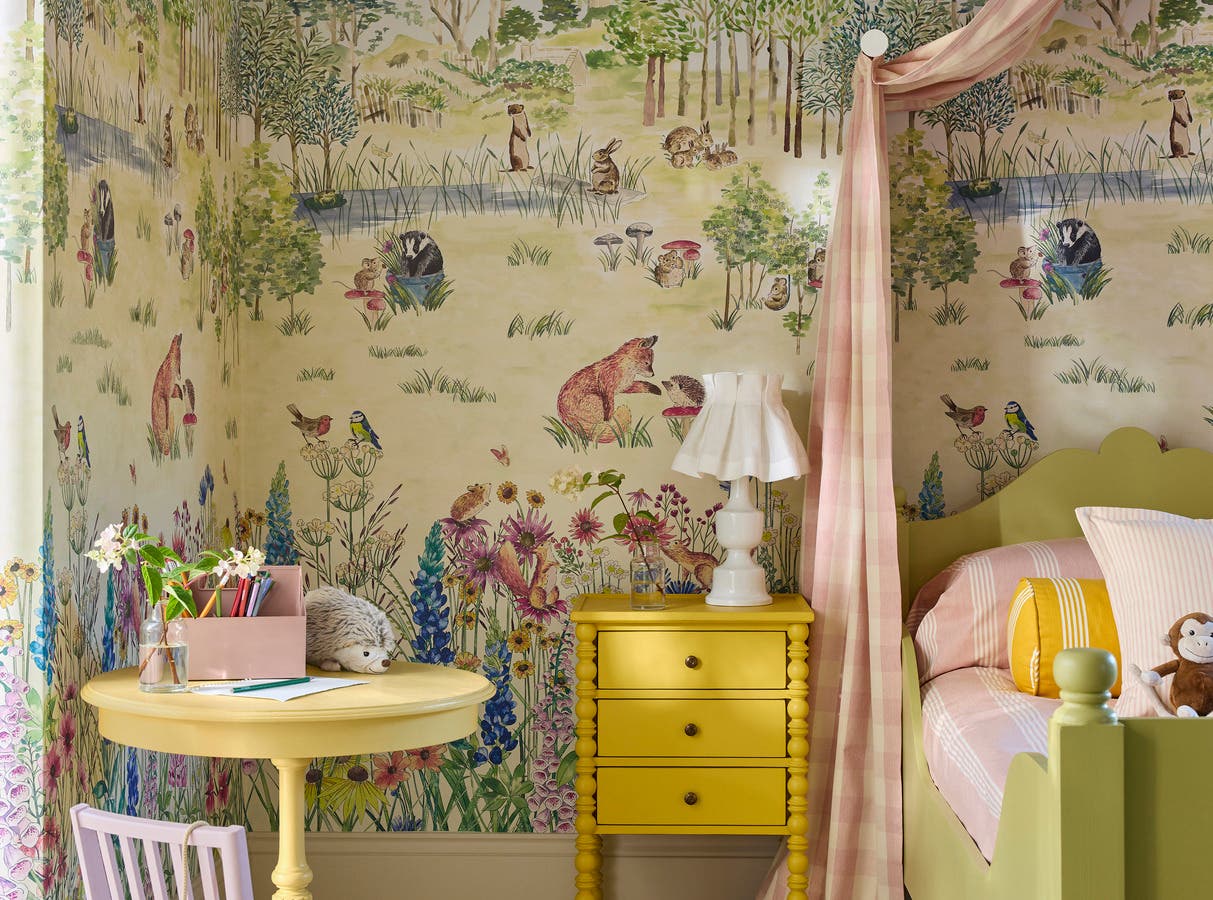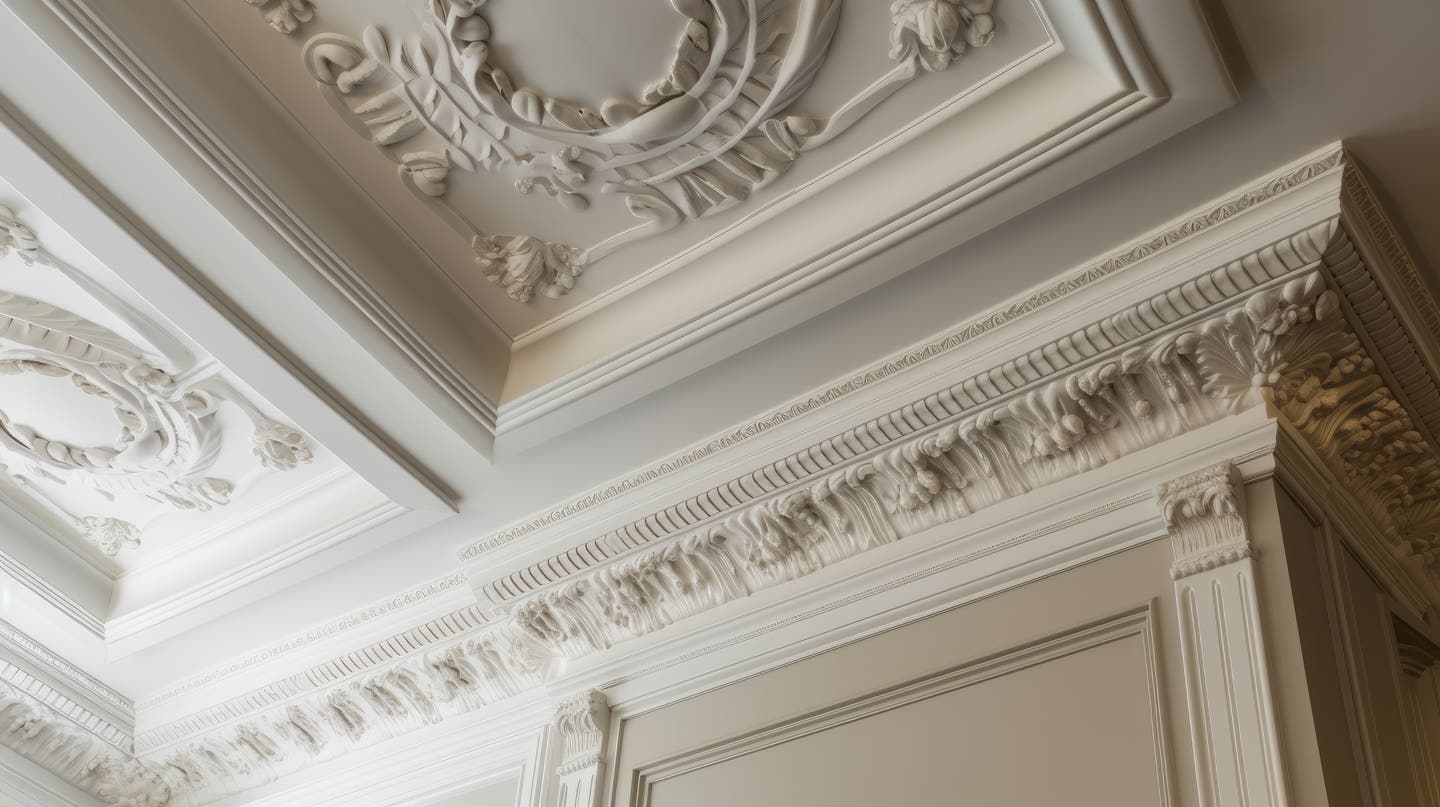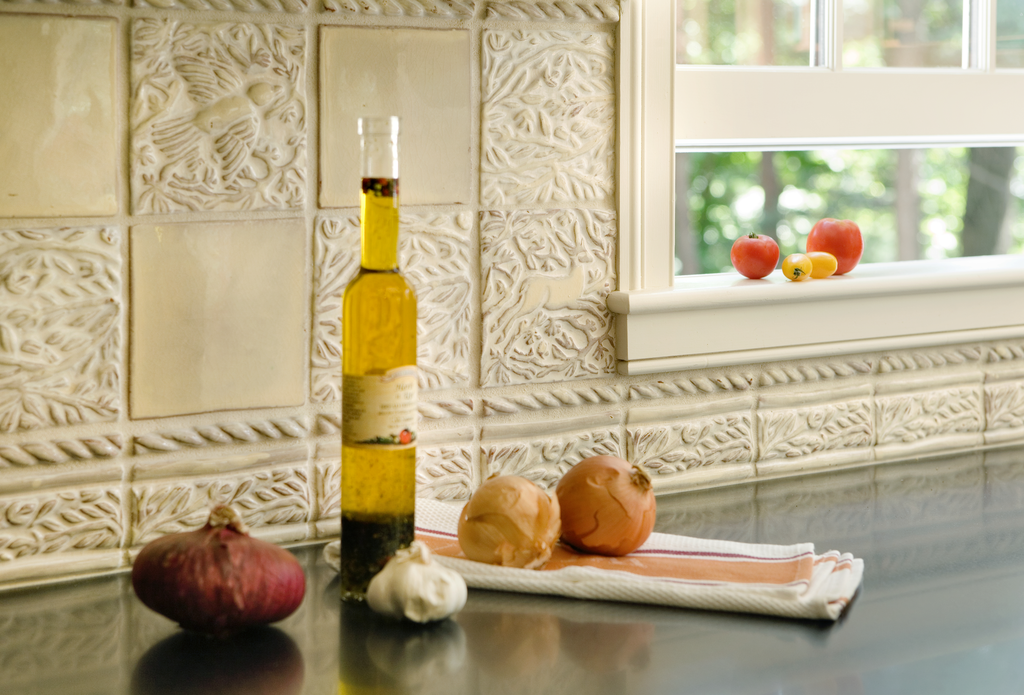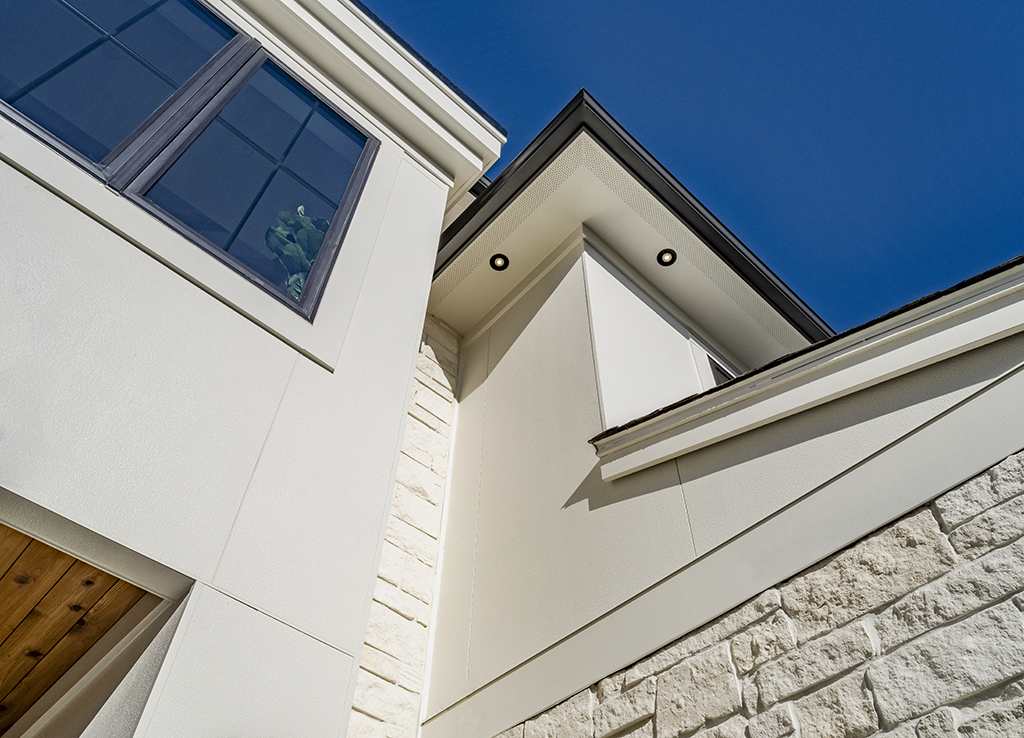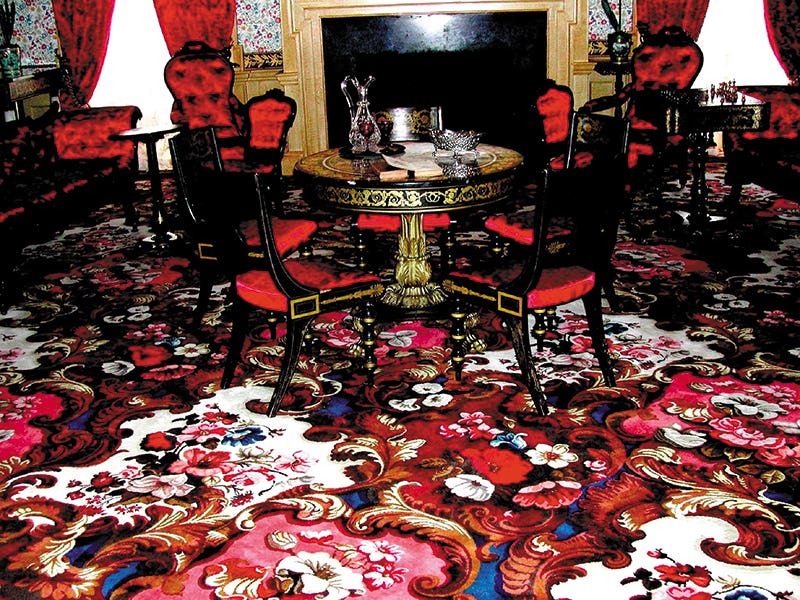
Product Reports
New Carpets for Historic Interiors
By Maureen Mant, David Luckham Consultants Ltd.
For hundreds of years carpets have reflected the culture, status and aspirations of their owners. Vernacular weavers in Turkestan created, and still create, floor and wall carpets that reflect their daily lives, and incorporate patterns that are intrinsic to their culture. In Europe, the early carpet weavers copied the designs of the imported Asiatic carpets that were so admired, but with the Renaissance came a new appreciation of architecture and geometry that led to carpets and decorative floor designs reflecting the architecture and Classical nature of the buildings in which they were placed. For the great houses that Robert Adam designed, such as Saltram House near Plymouth, England, Adam created carpets to be as integral to their location as the plasterwork and moldings.
In order to reflect the three-dimensional architecture of the rooms, the two-dimensional carpet drawings incorporated appropriately drawn shadows and a myriad of colors to express the missing third dimension. Later, fitted and area carpets reflected the prevailing styles of the times. Today, whether a building is large and public or small and domestic, the impact of the floor covering must not be underestimated – if only because of the proportionately large area involved.
Therefore, any introduction of a new carpet to an established historic interior is bound to make a considerable visual impact – for good or for ill. Too often a “safe,” neutral carpet is chosen to avoid drawing attention away from the walls, ceilings and other decorative features. However, the effect of a design that does not relate to and enhance those features is to reduce their visual presence, so that the interior loses its cohesion and impact. The importance of the carpet selection in any location cannot be overstated, simply because the carpet provides a background to the features surrounding it and items placed upon it.
Repairing or Reproducing Historic Carpet Patterns
Any choice of carpet will, naturally, be governed by the purpose and appearance of its intended location, but for historic carpets, there are additional criteria: Has the usage and/or footfall of the location changed over time? What evidence is there for the type of carpet to be used, and is this type of carpet still made? Whether the chosen carpet replaces an original or is a new creation for the location, the answers to these questions will determine the level of authenticity to be specified, and once this level has been determined, the process of selection becomes relatively straightforward.
In situations where a curatorially accurate reproduction of a carpet is required, usually because the original has become fragile or the room use has changed, strict control must be exercised over the drawing, color palette, quality of yarn, construction and finish, all of which vary considerably from culture to culture and from time to time. Where possible, the new carpet should be made by the same method, in the same materials and, ideally, in the same country as the original – or at least under the supervision of experienced workers from that country or culture. Where the existing carpet is already a copy of an earlier one, a choice has to be made whether to copy the characteristics of the existing carpet or to research the character and replicate the original.
The choice should be made on the basis of the finest quality – usually the original – in order to produce the most handsome carpet with the best wearing characteristics. However, it is not always possible to reproduce the construction of the original carpet because the skills and technology may no longer exist. Such was the situation with the printed tapestry velvet drawing room carpet at the Hampton National Historic Site near Baltimore. These instances pose an added challenge as it can be extremely difficult to re-create the very particular character of a carpet using a different technology. In the case of the Hampton carpet, the loom chosen to best replicate the 39 colors and fine drawing of the original carpet was a full-pitch spool Axminster loom, one of the last of its kind in the world, and the type of loom that superseded the printed tapestry technology.
Historically, the impetus behind carpet-making has been to widen markets through faster and cheaper methods of manufacture and materials, so that modern loom technology is no longer able to replicate the fine character of earlier carpets. Therefore where traditional carpet mills survive it is important to support and use them, not only for historic authenticity and character, but also because their skills and technology may otherwise be lost.
Do Your Research
In any historic setting where there is no existing carpet to be reproduced, evidence for the most appropriate design and construction must be researched. Depending on the level of authenticity required, this research can range from a search of an appropriate carpet manufacturer’s archives to extensive documentary research of house receipts, inventories, wills and letters together with a physical search of the building for evidence under existing carpets and in attics, leading to a carpet archive search or a newly commissioned design based on the evidence and/or reflecting the architectural details of the location. Even where a basic level of authenticity is required, attention should be paid to the detail of the archive design. Changes such as simplifying the design or altering the scale to accommodate a different technology can quickly lead to a carpet with an inappropriate, modern character. New designs of carpets for historic interiors can be very successful, but mistakes are easily made. It is vitally important that a close affinity exist between the new carpet and its surroundings and it should enhance, not dominate nor detract from, the features around it. This does not mean it should be a shadowy element of the interior decoration, but instead that it should adopt or reflect the aesthetics of the other features, providing an integrated, grounded component of the space.
The construction of any new carpet will depend on the historic period and use of its location. Narrow-width Wiltons, Axminsters, flat-woven ingrains and hand-knotted carpets can be woven to archive designs or designed to order. These traditionally constructed carpets have excellent wearing characteristics and keep their good looks over many years, providing they are properly maintained. Protective floor coverings, such as painted floor-cloths, mattings and druggets, also play an important role in historic locations and can still be obtained. However, even these utility textiles should be sympathetic to their surroundings, like the grey-green felt drugget on the main visitor route at England’s Syon House that quietly protects the famous scagliola floor without compromising the impact of the design.
Fitting and Maintaining Carpets
Important as the carpets themselves are, correct fitting and maintenance are essential parts of any successful project. These factors prolong the life of any carpet and a little extra investment in these areas provides long-term savings in both time and money. The methods of fitting vary according to the construction and contribute to the overall appearance of the carpet. For example, a plain 12-ft.-wide broadloom Wilton will not have the same character as a plain 27-in.-wide Wilton sewn in the traditional manner. Fitting details such as borders, especially on stairs and landings, can also change the historic character of an installation, and determine whether the carpet can be moved regularly to prolong its life. However, like the reducing number of looms, the number of carpet fitters trained in these traditional skills is also decreasing.
Specifying appropriate new carpets for historic interiors is not a cheap option. However, these carpets form an integral part of their locations and must be treated as of equal priority with other fittings and finishes such as plasterwork, gilding and hangings. By choosing fine quality materials and weaving criteria, the carpet will not “tire” quickly and its original appearance will be maintained throughout its long life. If the cost of such carpets is considered on a “whole life” basis, it will be seen that they represent excellent value.
Maureen Mant is the co-director, along with David Luckham, of the The Living Looms project, a workshop created to preserve, maintain and develop the unique technologies and craft skills associated with historic, narrow-width carpet looms.
David Luckham has worked with international designers and manufacturers for almost 40 years, specifying textile floor coverings for historic properties in the U.S. and Europe. For more information on The Living Looms project, visit www.thelivinglooms.com; for more information on David Luckham Consultants, visit www.davidluckhamconsultants.com.



